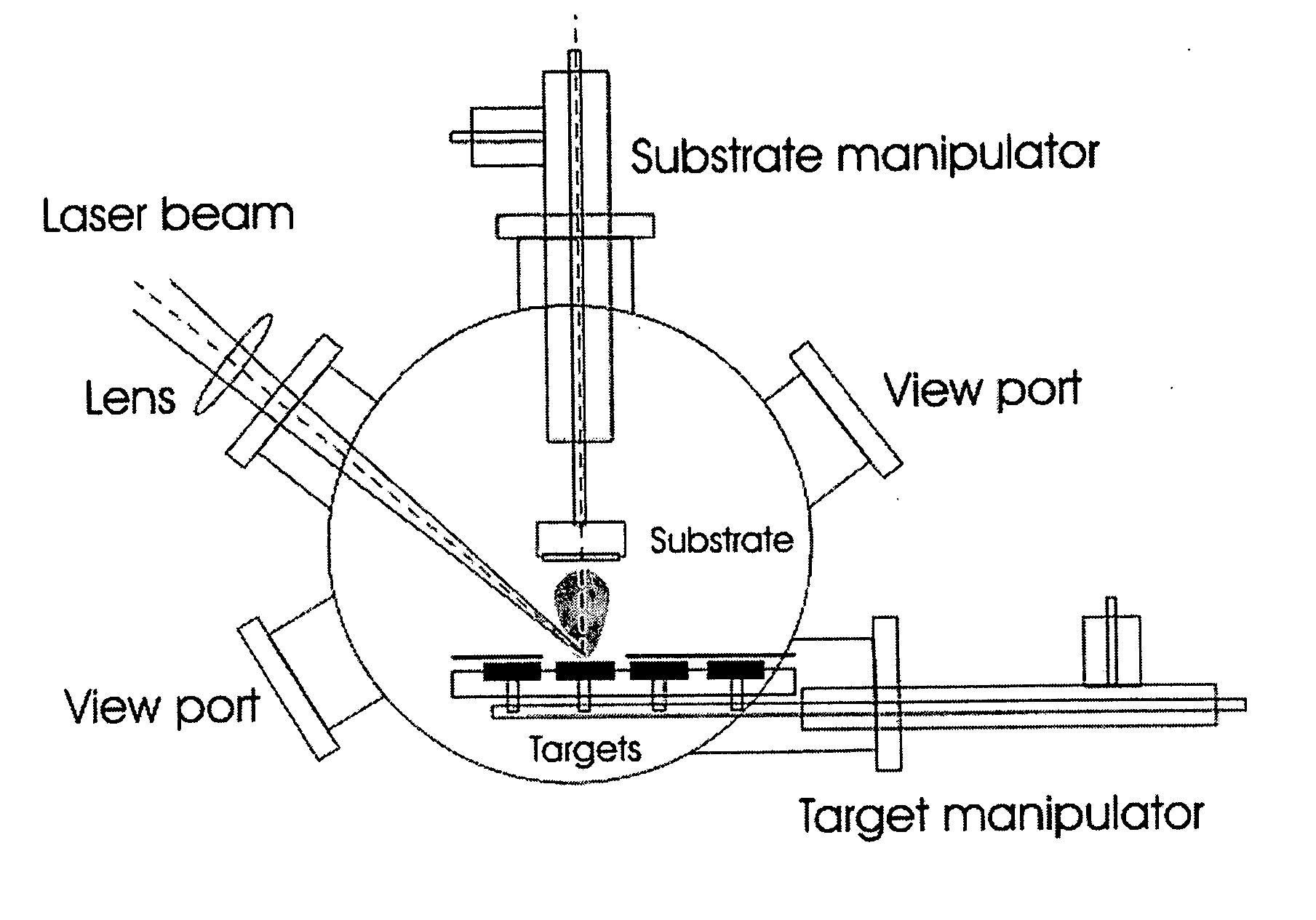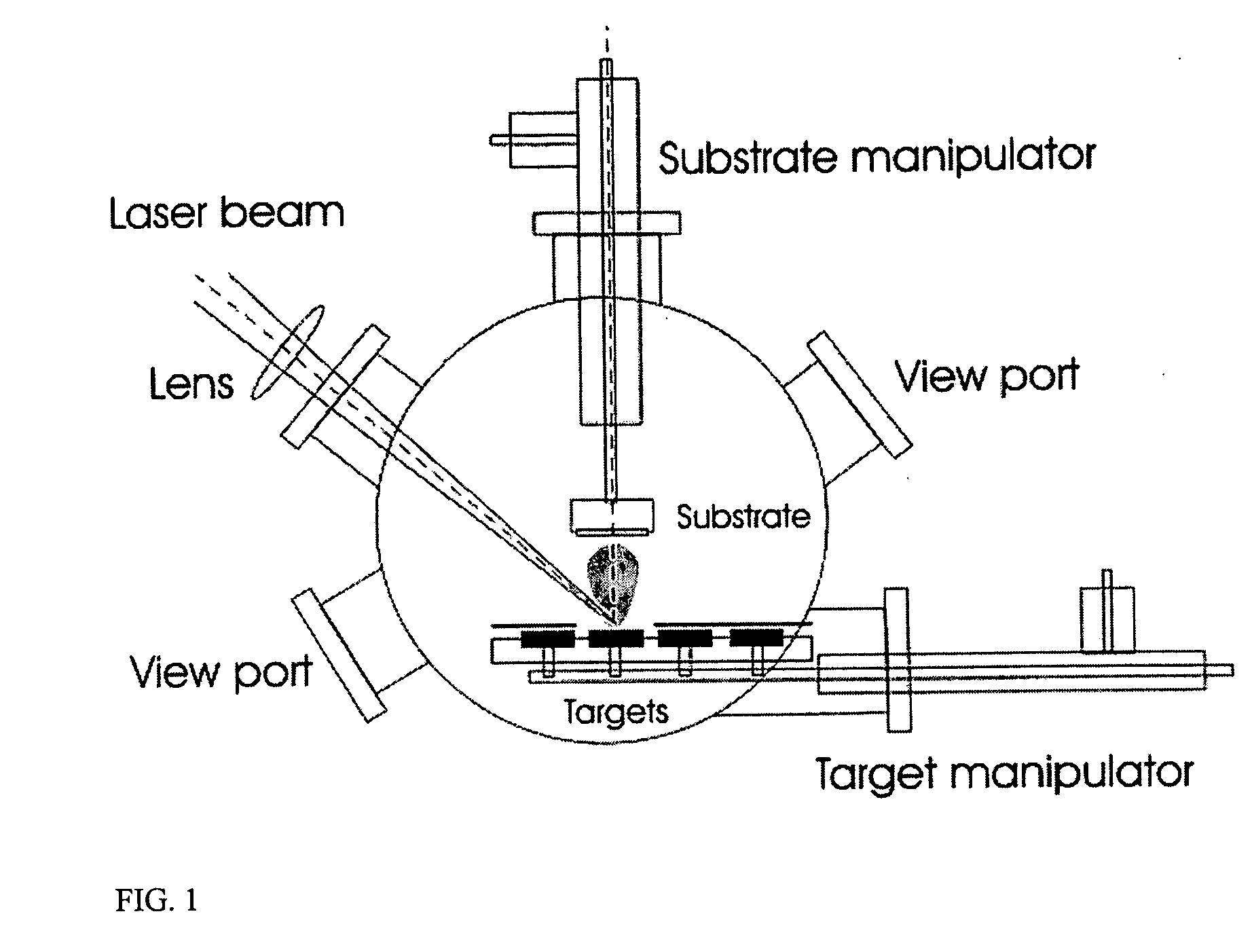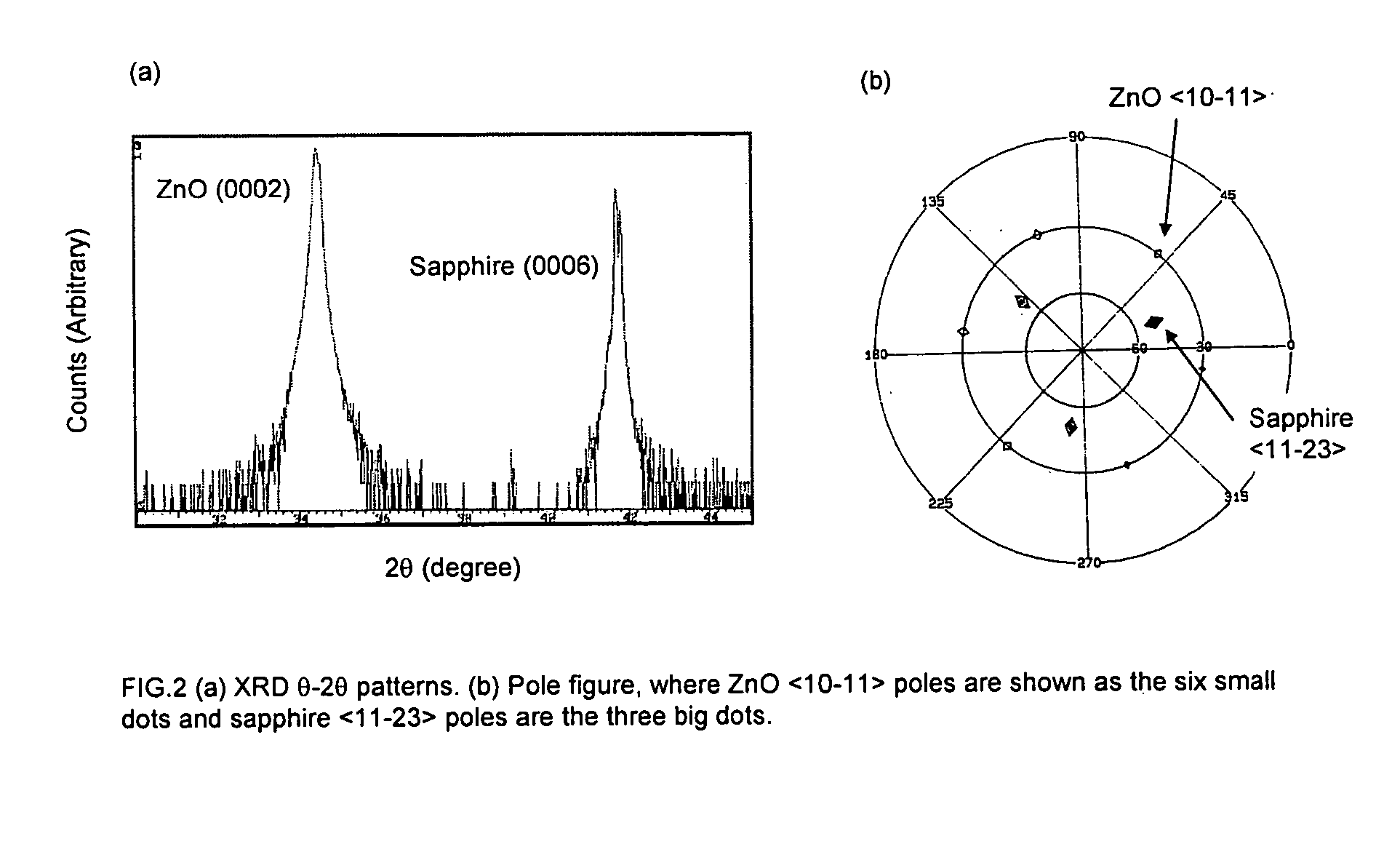P-type semiconductor zinc oxide films process for preparation thereof, and pulsed laser deposition method using transparent substrates
a technology of zinc oxide films and semiconductors, applied in the field of p-type semiconductor zinc oxide films, can solve the problems of large number of native donor defects to overcome, unstable mono-doped zno with group-v elements, and large number of native donor defects to achieve the effect of high carrier concentration and high conductivity
- Summary
- Abstract
- Description
- Claims
- Application Information
AI Technical Summary
Benefits of technology
Problems solved by technology
Method used
Image
Examples
Embodiment Construction
[0034] The present invention first provides an economic and reliable method for fabricating p-type semiconductor ZnO films. The fabrication procedure includes making of the ablation target, vacuum laser ablation of the target and thin film deposition, and post-growth annealing. The setup of a femtosecond pulsed laser deposition (fs-PLD) system is schematically shown in FIG. 1.
[0035] The target for laser ablation is made of a mixture of ZnO powders with lithium phosphate (Li3PO4) powders of up to 2 wt %. Using lithium phosphate is an efficient way of simultaneous introduction of the two dopants. The mixed powders are first compressed with a hydraulic compressor with a pressure of 2-6 ton / cm2. The solid target disk is then sintered for 10 hrs at temperatures up to 1000° C. During sintering, the target is buried in ZnO powders to avoid decomposition. The target thus made has a density of 90%. A high density (at least 80%) target is preferred for reducing particles in the ablation plum...
PUM
| Property | Measurement | Unit |
|---|---|---|
| temperature | aaaaa | aaaaa |
| distance | aaaaa | aaaaa |
| temperatures | aaaaa | aaaaa |
Abstract
Description
Claims
Application Information
 Login to View More
Login to View More - R&D
- Intellectual Property
- Life Sciences
- Materials
- Tech Scout
- Unparalleled Data Quality
- Higher Quality Content
- 60% Fewer Hallucinations
Browse by: Latest US Patents, China's latest patents, Technical Efficacy Thesaurus, Application Domain, Technology Topic, Popular Technical Reports.
© 2025 PatSnap. All rights reserved.Legal|Privacy policy|Modern Slavery Act Transparency Statement|Sitemap|About US| Contact US: help@patsnap.com



